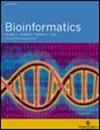ViNe-Seg:嵌入图形用户界面的深度学习辅助可见神经元分割及后续分析功能
IF 4.4
3区 生物学
Q1 BIOCHEMICAL RESEARCH METHODS
引用次数: 0
摘要
摘要 神经体节的分割是神经元微电路光学功能成像分析的关键步骤,通常也是最耗时的步骤。近年来,人们开发了多种自动分割工具,以提高分割过程的速度和一致性,这些工具大多采用深度学习方法。目前的分割工具虽然先进,但在生成准确的分割结果方面仍面临挑战,尤其是在信噪比较低的数据集中。这就导致了对人工分割技术的依赖。然而,手动方法虽然是根据特定实验室方案定制的,但会因个体解释的差异而产生变异,从而可能影响不同研究数据集的一致性。为了应对这一挑战,我们推出了 ViNe-Seg:一种基于深度学习的半自动分割工具,它提供(i)可见神经元的检测,无论其活动状态如何;(ii)在正在进行的实验中执行分割的能力;(iii)用户友好的图形界面,便于专家监督,确保感兴趣区的精确识别;(iv)一系列分割模型,可选择训练自定义模型并与社区共享;以及(v)后续分析步骤的无缝集成。可用性和实施 ViNe-Seg 的代码和文档可在 https://github.com/NiRuff/ViNe-Seg 上公开获取,也可从 https://pypi.org/project/ViNeSeg/ 上安装。本文章由计算机程序翻译,如有差异,请以英文原文为准。
ViNe-Seg: deep-learning-assisted segmentation of visible neurons and subsequent analysis embedded in a graphical user interface
Abstract Summary Segmentation of neural somata is a crucial and usually the most time-consuming step in the analysis of optical functional imaging of neuronal microcircuits. In recent years, multiple auto-segmentation tools have been developed to improve the speed and consistency of the segmentation process, mostly, using deep learning approaches. Current segmentation tools, while advanced, still encounter challenges in producing accurate segmentation results, especially in datasets with a low signal-to-noise ratio. This has led to a reliance on manual segmentation techniques. However, manual methods, while customized to specific laboratory protocols, can introduce variability due to individual differences in interpretation, potentially affecting dataset consistency across studies. In response to this challenge, we present ViNe-Seg: a deep-learning-based semi-automatic segmentation tool that offers (i) detection of visible neurons, irrespective of their activity status; (ii) the ability to perform segmentation during an ongoing experiment; (iii) a user-friendly graphical interface that facilitates expert supervision, ensuring precise identification of Regions of Interest; (iv) an array of segmentation models with the option of training custom models and sharing them with the community; and (v) seamless integration of subsequent analysis steps. Availability and implementation ViNe-Seg code and documentation are publicly available at https://github.com/NiRuff/ViNe-Seg and can be installed from https://pypi.org/project/ViNeSeg/.
求助全文
通过发布文献求助,成功后即可免费获取论文全文。
去求助
来源期刊

Bioinformatics
生物-生化研究方法
CiteScore
11.20
自引率
5.20%
发文量
753
审稿时长
2.1 months
期刊介绍:
The leading journal in its field, Bioinformatics publishes the highest quality scientific papers and review articles of interest to academic and industrial researchers. Its main focus is on new developments in genome bioinformatics and computational biology. Two distinct sections within the journal - Discovery Notes and Application Notes- focus on shorter papers; the former reporting biologically interesting discoveries using computational methods, the latter exploring the applications used for experiments.
 求助内容:
求助内容: 应助结果提醒方式:
应助结果提醒方式:


